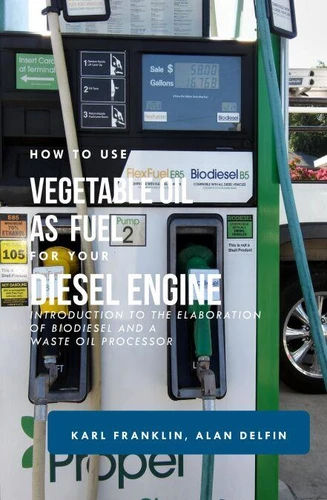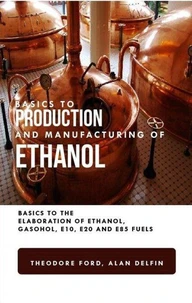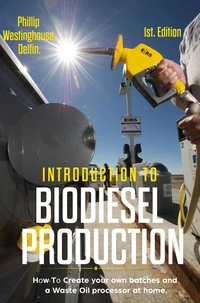HOW TO USE VEGETABLE OIL AS FUEL FOR YOUR DIESEL ENGINE: Introduction to the elaboration of biodiesel and a waste oil processor
Par : ,Formats :
Disponible dans votre compte client Decitre ou Furet du Nord dès validation de votre commande. Le format ePub est :
- Compatible avec une lecture sur My Vivlio (smartphone, tablette, ordinateur)
- Compatible avec une lecture sur liseuses Vivlio
- Pour les liseuses autres que Vivlio, vous devez utiliser le logiciel Adobe Digital Edition. Non compatible avec la lecture sur les liseuses Kindle, Remarkable et Sony
 , qui est-ce ?
, qui est-ce ?Notre partenaire de plateforme de lecture numérique où vous retrouverez l'ensemble de vos ebooks gratuitement
Pour en savoir plus sur nos ebooks, consultez notre aide en ligne ici
- FormatePub
- ISBN978-1-393-27226-7
- EAN9781393272267
- Date de parution07/03/2020
- Protection num.pas de protection
- Infos supplémentairesepub
- ÉditeurRelay Publishing
Résumé
The increasing need for cleaner and sustainable energies provoked by the contamination emitted to the atmosphere made by petrol sources had made biodiesel an option to reduce those emissions by using a renewable, clean product as vegetable to impulse diesel engines. There are some main advantages of biodiesel is that it can be used in existing engines, vehicles and infrastructure with practically no changes.
Biodiesel can be pumped, stored and burned just like petroleum diesel fuel, and can be used pure, or in blends with petroleum diesel fuel in any proportion. Power and fuel economy using biodiesel is practically identical to petroleum diesel fuel, and year round operation can be achieved by blending with diesel fuel. When producing biodiesel you can virtually take advantage of 100% of the oil used in other forms of raw materials (for example glycerol to make soaps).
In this book we will try to expose the chemistry behind the processing of vegetable oil (waste or clean), the equipment, safety measures and set up for the area to process a batch of biodiesel at home.
Biodiesel can be pumped, stored and burned just like petroleum diesel fuel, and can be used pure, or in blends with petroleum diesel fuel in any proportion. Power and fuel economy using biodiesel is practically identical to petroleum diesel fuel, and year round operation can be achieved by blending with diesel fuel. When producing biodiesel you can virtually take advantage of 100% of the oil used in other forms of raw materials (for example glycerol to make soaps).
In this book we will try to expose the chemistry behind the processing of vegetable oil (waste or clean), the equipment, safety measures and set up for the area to process a batch of biodiesel at home.
The increasing need for cleaner and sustainable energies provoked by the contamination emitted to the atmosphere made by petrol sources had made biodiesel an option to reduce those emissions by using a renewable, clean product as vegetable to impulse diesel engines. There are some main advantages of biodiesel is that it can be used in existing engines, vehicles and infrastructure with practically no changes.
Biodiesel can be pumped, stored and burned just like petroleum diesel fuel, and can be used pure, or in blends with petroleum diesel fuel in any proportion. Power and fuel economy using biodiesel is practically identical to petroleum diesel fuel, and year round operation can be achieved by blending with diesel fuel. When producing biodiesel you can virtually take advantage of 100% of the oil used in other forms of raw materials (for example glycerol to make soaps).
In this book we will try to expose the chemistry behind the processing of vegetable oil (waste or clean), the equipment, safety measures and set up for the area to process a batch of biodiesel at home.
Biodiesel can be pumped, stored and burned just like petroleum diesel fuel, and can be used pure, or in blends with petroleum diesel fuel in any proportion. Power and fuel economy using biodiesel is practically identical to petroleum diesel fuel, and year round operation can be achieved by blending with diesel fuel. When producing biodiesel you can virtually take advantage of 100% of the oil used in other forms of raw materials (for example glycerol to make soaps).
In this book we will try to expose the chemistry behind the processing of vegetable oil (waste or clean), the equipment, safety measures and set up for the area to process a batch of biodiesel at home.

















